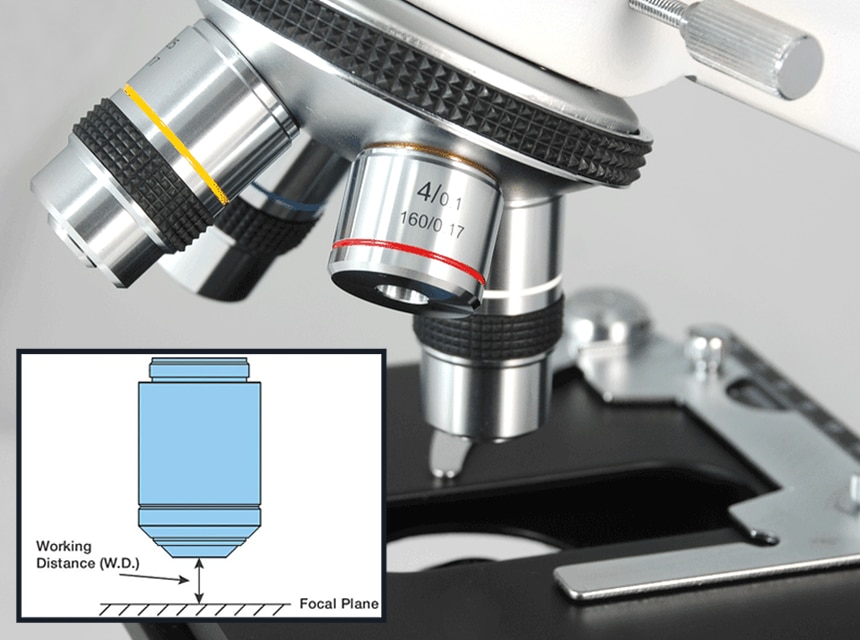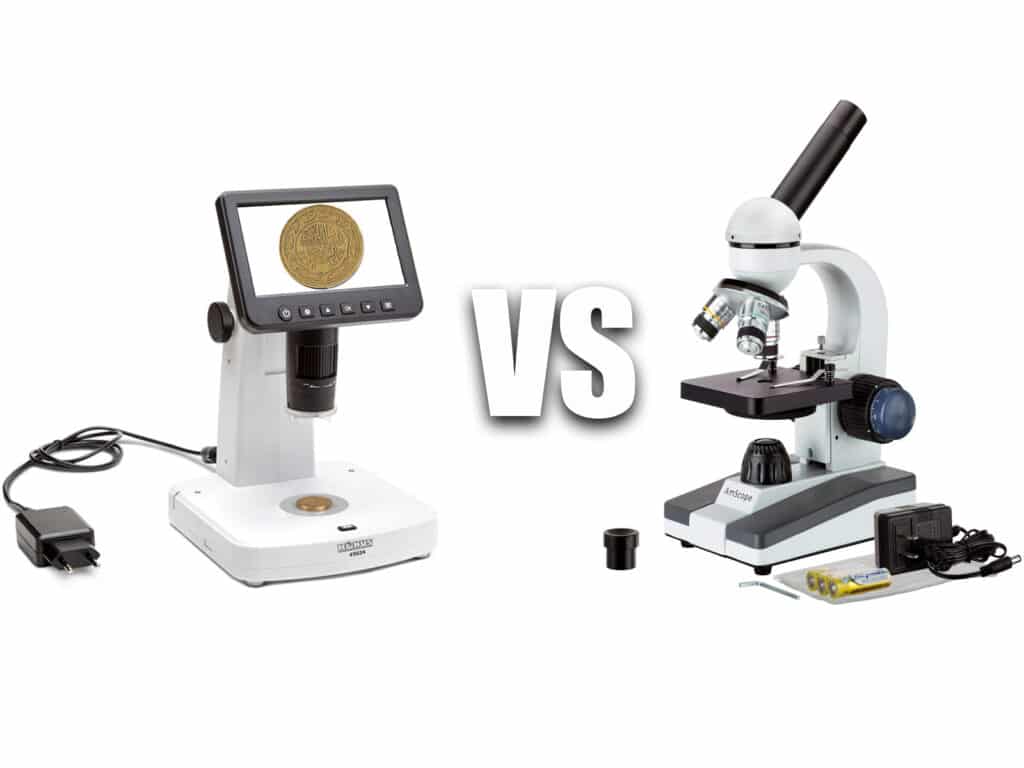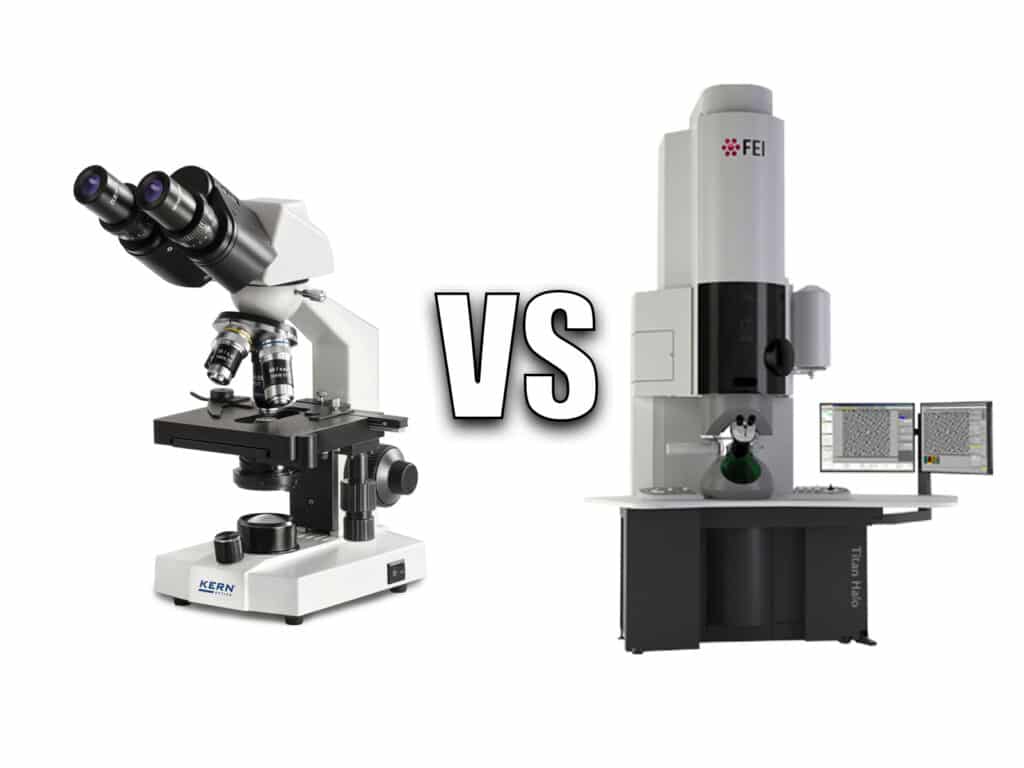

There are many different types of microscopes and while some may look similar in appearance, their uses are vastly different. When it comes to understanding the differences between a compound vs stereo microscope, things may seem a bit confusing. However, the purpose of this article is to walk you through all their features and equipment so you have a better understanding.
At their most basic level, a compound microscope is used in the field of biology when you need to view something under high magnification. As for a stereo microscope, it is most useful when you want to examine larger objects, such as insects and minerals. Overall, however, both are optical microscopes that harness the power of light for magnification. Let’s dive deeper into this mesmerizing field.
For those who are beginners, a stereo microscope is easy to use because of its simplicity.
Within the stereo microscope, you will find an eyepiece at the top and a base at the bottom. The simple objective lens moves up and down on the arm for a relatively simple construction.
A stereo microscope is quite a bit simpler than a compound microscope. While it has an eyepiece and a base, it only had a focus knob for adjustment.
There are a lot of intricate parts in a compound microscope, so let’s try to explain the highlights.
A compound microscope can seem a bit overwhelming at first glance. There is a lot to adjust and it can take quite a bit of practice to sort everything out. This is why compound microscopes are more often used by professionals.
When you look through a compound microscope, you are able to see your specimen thanks to a system of light and mirrors. There are many adjustment knobs along the side of the microscope, including a coarse adjustment and a fine adjustment knob to allow you to see with accuracy and clarity your specimen.
Let’s take a closer look at how the two microscopes stack up.
Microscopes are needed to magnify objects and this is where the two types really differ. A compound microphone has the ability to magnify an object between 40x to 1,000x, which is very impressive.
In contrast, a stereo microscope only has the ability to magnify an object between 6x and 50x. While still worthwhile, you won’t be using this type of microscope for any fine details.
If you’re worried about the magnification ability but want your microscope for a kid, there are plenty of cool experiments they can try out. For example, The Metropolitan Museum has creative activities for children to do at home, and if you have a microscope, all the better to examine your findings up close.
Interestingly, a stereo microscope allows you the ability to see an object magnified in 3D. This is because it has two optical pathways that transmit different information to each eye.
Unfortunately, a compound microscope only allows you to see an object in 2D. This is because it has just a single optical pathway that both eyes look through.

This is a technical term, but the working distance refers to the space between the top part of a specimen and the bottom of the objective lens. For a stereo microscope, the working distance ranges between 20 and 150 millimeters whereas a compound microscope has a working distance between 0.13 mm and 4 mm. You can see right away just how different the two differences are.
Now that we understand the working distance, it is easier to see what type of specimens each type of microscope can handle. The larger space for a stereo microscope means you can view large objects such as leaves, rocks, and insects.
You can even use some types of microscopes, including stereo versions, for electronics repair because the working distance is so large.
The much smaller working distance for a compound microscope means you can only view very thin specimens, such as prepared slides, hairs, and feathers.
Yet another technical term, the condenser helps focus the light that is used for magnification. You will be able to find a condenser in a compound microscope and most likely in a stereo microscope as well.
After going through all the details of each type of microscope, you might think that either type is completely out of your budget. However, you may be surprised that there are many types of both stereo and compound microscopes that are actually quite affordable.
For example, the OMAX M82ES-SC100-LP100 is a compound microscope that is priced under $230. It features an LED light source and multiple objectives so that you can spend your time examining some truly cool things.
Those that are interested in a stereo microscope, the SWIFT S7is a good place to start with. While it is a bit more expensive, it is still under $430, which is pretty impressive given the fact that it is so high-tech.
We love the idea of budding scientists and would welcome anyone, young or old, to invest in a microscope all your own. You can get up close and personal with the world around you, which is pretty cool. For those who want to examine larger objects, it’s best to go with a stereo microscope which has a larger working distance. And for those that want to see tiny specimens in a lot of detail, a compound microscope is the way to go. We hope you now have a better understanding of the difference between a compound vs stereo microscope. It’s so much fun to explore our world!





